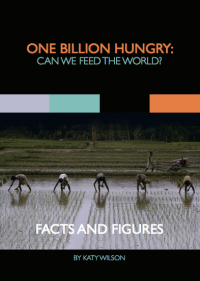By Katrin Glatzel

Credit: Katrin Glatzel, 2015 (Senegal)
In sub-Saharan Africa (SSA) where agriculture is predominantly rainfed, farmers’ access to water is often limited based on seasonal variation. Yet water scarcity in the region is not necessarily caused by a physical lack of water, but rather by an ‘economic water scarcity’. This implies that the necessary public investments in water resources and infrastructure are not substantial enough to meet water demands in an area where people do not have the means to make use of water sources on their own. In fact, in many parts of SSA there is plenty of water available. However, groundwater resources, such as aquifers, remain a relatively abundant yet underused resource, with less than 5% of the water used for irrigation coming from groundwater.
The challenge is therefore to increase the amount of available water that is ‘harvested’ for crop growth. Such water harvesting can be done at the field, farm or watershed level. In some places, there is a potential for groundwater extraction using boreholes. And research by the International Food Policy Research Institute (IFPRI) has shown that motor pumps have the potential to expand the amount of agricultural land irrigated during the dry season to 30 million hectares — four times the current area. There is urgent need to sustainably increase the amount of irrigation from the current 6% of arable land. Until then an estimated 200 million people in SSA – that is 18% of the continent’s population – face serious water shortages.
Furthermore, climate change and a growing population continue to pose additional challenges to water management in agriculture. Prolonged periods of drought in many parts of SSA are becoming increasingly frequent. This increases pressures on valuable water resources and agricultural irrigation. In response, water conservation policies, strategies, and activities such as water harvesting, are ever more important to manage and protect fresh water as a sustainable resource to meet current and future human demands. [Read more…]















